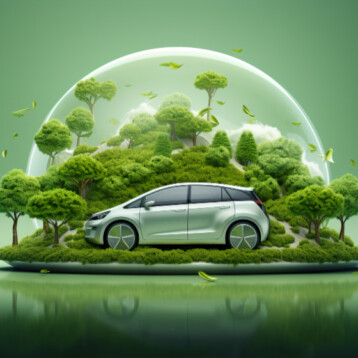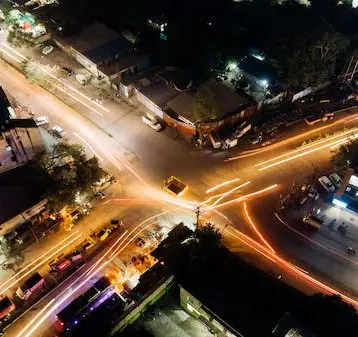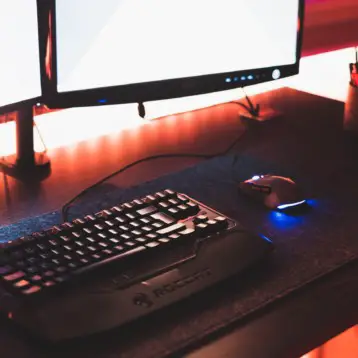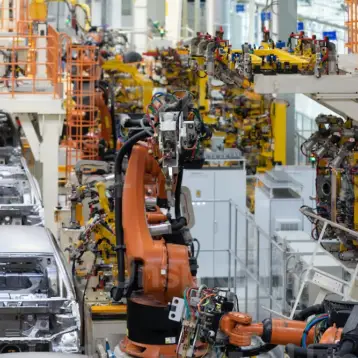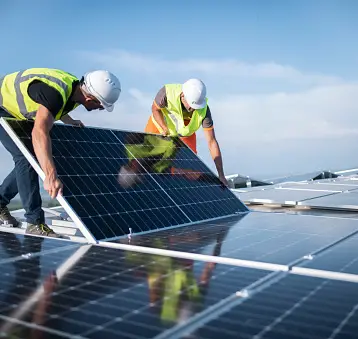3GSolar plastic organic solar cell
Barry Breen 3GSolar CEO
3GSolar transparent solar cell
Barry Breen with Israeli president Shimon Peres
Solar technology has advanced quite considerably in the last several years. However manufacturing costs and other limitations have restricted the wide spread use of solar panels. Now, a new Israeli startup called 3GSolar believes it has the solution – solar cells using an artificial form of photosynthesis based in part on organic material and nanotechnology.
Most existing solar cells use expensive silicon based technology which can’t be produced in different colors or be made transparent for use in windows and walls. The Israeli company 3GSolar is developing a new generation of solar cells which use organic technology that is much cheaper to manufacture and can be produced in any color or shape and can be incorporated into almost any structure.
To learn more about 3GSolar and its technology TFOT recently had an interview with Barry Breen, 3GSolar CEO.
–
–
Interview with 3GSolar
Q: When was the company created and what was the basic motivation?
A: 3GSolar Photovoltaics Ltd was founded in 2010 after initial R&D that was carried out in a technology incubator and with angel funding. The motivation is to commercialize large area printed dye solar cells (DSC) based on unique innovations of the 3GSolar team. Dye cells were invented by Professor Michael Graetzel and Brian O’Regan over twenty years ago, but the cells had scale-up and stability issues that 3GSolar successfully overcame with its innovations. 3GSolar has 15 patents and applications protecting its industry leading innovations used in DSC design and scale-up. The solar cells are simple to manufacture using a printing process with very low capital cost. Since DSC is based on dyes, solar panels can be made in any color and transparency. This is not an option with silicon or thin-film modules. It provides the opportunity to use DSC panels in place of walls and windows for very aesthetic buildings, rather than just attaching them to the roof.
–
–
Q: Can you explain what are dye based solar cells and how are they different than both silicon and thin film solar cells?
A: Dye solar cells (DSC) are based on a photosynthesis-like process that uses a sandwich of electrolyte, titanium dioxide and dye to create an electrical current. These are electrochemical cells much like batteries rather than the p-n junction solid-state devices that are commonly sold today in the solar photovoltaics market.
–
–
Dye-sensitized solar cells separate the two major functions provided by silicon or thin-film in a traditional cell design. Silicon acts as both the source of photoelectrons, as well as providing electric field to separate charges and create current. This requires that the silicon be of ultra-high purity because otherwise, the charges would be lost before reaching the external circuit. In the dye-sensitized solar cell, the titanium oxide semiconductor is used solely for charge transport while the photoelectrons are provided from a separate photosensitive dye. Charge separation occurs at the surface between the dye, semiconductor and electrolyte. No special purity of the materials is required.
–
–
The 3GSolar DSC works because of nanotechnology. One electrode is comprised of nano-particles of carbon and the other is a porous layer of nano-sized titanium oxide particles coated with a single mono-layer of photoactive dye molecules (dye layer thickness less than 2 nanometers). Yet, the solar cells are manufactured using simple techniques of screen printing, wet processing and thermal treatments. The titanium oxide and the carbon nanoparticles are turned into printable pastes without losing any of the nano characteristics that make possible the functioning of the DSC. The dye is engineered to self-assemble on the titanium oxide nanoparticles from a simple staining bath. The dye molecules chemically bond to the oxide surface but do not at all stick to their neighboring molecules.
–
–
As a result of the unique photon to current conversion mechanism, the DSC provides a range of performance and cost advantages compared to silicon cells. The solar cells are simple to manufacture using a process with very low capital cost, low energy requirements for their production and minimal toxic materials. DSC produces up to 40% more electricity than silicon cells in a range of outdoor lighting conditions for the same kilowatt of panels. Under indoor lighting such as fluorescent or LED, DSC can be ten times more efficient than silicon. This gives the opportunity to charge low power electronics from room light, what is known as energy harvesting, in addition to outdoor power module applications.
–
–
Since DSC is based on dyes, solar panels can be made in any color and transparency. This is not an option with silicon. It provides the opportunity to use DSC panels instead of walls and windows for very aesthetic buildings, rather than just attaching them to the roof.
–
–
Q: Plants use photosynthesis which converts solar energy into chemical energy by using light from the sun together with water and carbon dioxide (among other things) and turning them into carbohydrates such as sugars. You call your technology “photosynthesis-like process” – is there any involvement of carbon dioxide or water in the process?
A: By photosynthesis-like process we are comparing our technology with one aspect of processes in plants, but with no carbon dioxide or water involved. In a plant there is a high surface area substrate (a leaf) carrying a dye material (green chlorophyll) and the solar illumination generates a fuel (sugars) for growth of the plant. In dye cells the high surface substrate is nanocrystalline titania, the dye is an organic based material, and the “fuel “produced is electrons rather than sugars.
–
–
Q: Organic LED displays (OLEDs) use electricity to create light using organic dyes. Dye based solar cells seems to do the exact opposite – use light to create electricity using organic dyes – is this comparison correct?
A: This is a correct statement on a general level and yet, the physics and the materials systems are different. OLED’s are solid-state organic devices whereas DSC’s are electrochemical devices.
–
–
Q: How do you manufacture dye based solar cells and how is it different than the manufacturing technique of thin film or silicon solar cells?
A: Dye cells are made by a simple coating process, depositing a titania layer on a transparent substrate and a counter electrode layer (e.g. carbon) on a second substrate or even directly upon the titania layer. A common coating method is used such as screen-printing from pastes followed by oven sintering in air. The titania layer is then stained with dye by simply dipping into a bath with dye solution. Electrolyte is added and the substrate edge is sealed.
–
–
Both the materials and the processes are low cost. For example, titania is a commodity material used in white paint and toothpaste. By comparison silicon or thin film cells require complex vacuum deposition methods with expensive equipment and very pure raw materials. Silicon cell production process is also very energy intensive.
–
–
Q: What kind of efficiency does 3GSolar technology currently offer and how does it measure relative to competing solar technologies?
A: At our present stage of R&D, we achieve over 10% efficiency in small glass cells in full sunlight and over 7% efficiency in commercial-size cells (size equivalent to commercial silicon cells). 3GSolar also succeeded in transferring its technology to plastic cells where we achieved almost 8% efficiency in full sunlight. These results are being continually improved. Silicon cells give twice these efficiency figures in direct sunlight, but silicon cannot be made transparent or aesthetically colored like our dye cells. 3GSolar DSC modules are far more effective under shading and low angle light than silicon, generating more kilowatt-hours for each kilowatt of modules.
–
–
Q: What are the main hurdles 3GSolar Dye Solar Cells face?
A: 3GSolar has achieved successful accelerated tests at 85⁰C for thousands of hours, showing that 3GSolar DSC can deliver stable long term outdoor reliability. The DSC solar cells have been operating on the company’s rooftop in Jerusalem for 3½ years with no change in performance. We continue to improve cell durability in parallel with increasing efficiency. This is crucial for outdoor applications of the 3GSolar cells since a 25-year lifetime is expected for grid-connected panels. This is especially true when the panel is integrated into the walls or windows of the building (BIPV – building integrated photovoltaics).
–
–
Q: Who is your primary target market? energy companies looking to build to build solar power plants or home and small business users looking for a clean renewable energy solution?
A: We are primarily focusing on dye cells for BIPV applications and consumer devices for indoor applications, where dye cells with their enhanced response to nonstandard lighting conditions and
lower cost are better than silicon. Entry to the BIPV market requires partnering with existing BIPV suppliers or producers of other building elements, such as curtain wall manufacturers. Together with our manufacturing and marketing partners, we will supply solar panels in accordance with the architects’ dream of color, shape, form and transparency that enhance a building’s appearance rather than detracting from it.
–
lower cost are better than silicon. Entry to the BIPV market requires partnering with existing BIPV suppliers or producers of other building elements, such as curtain wall manufacturers. Together with our manufacturing and marketing partners, we will supply solar panels in accordance with the architects’ dream of color, shape, form and transparency that enhance a building’s appearance rather than detracting from it.
–
Q: Do you feel that solar energy could someday replace coal/gas and nuclear power as the main source for large scale energy manufacturing or will it continue to be just a relatively minor addition to these more powerful energy sources?
A: Prices of solar modules and balance of plant will continue to drop so it is likely that an increasing fraction of coal/gas/nuclear systems will be replaced by PV. However, solar power is intermittent or limited on cloudy days and provides no power at all at night. Therefore, most power must still be supplied by conventional sources. The balance will further shift in favor of solar once low cost, large scale energy storage technologies (e.g. in batteries) are deployed, but this will take time.
–
–
Q: Let’s look at a real life example – a typical home in Israel consume about 500 kWh per month which cost about 13 cents (or $65 per month). How much will it cost to buy a solar system based on your technology that will produce the same amount of power (again let’s assume optimal sunny conditions) and how large will this solar array be? (if you like feel free to compare this with a current generation silicon based solar panel system).
A: For an optimally oriented array of panels in Israel, each kW of panels will produce 2,000 kW-hours of electricity per year. 6000 KW-hr of annual electricity consumption means that 3 kW of panels are required. Assuming that we achieve in Israel a supply chain of parts and installation that has matured like in Europe, then an installed cost of $2.5 per watt will be possible. That is $7,500 for an installed 3 kW solar system. Once fully developed within the next few years, the 3GSolar DSC modules will reach 14% efficiency. This means that the total area of panels in the 3 kW array will be around 22 square meters.
–
–
Q: Where do you stand right now in terms of development?
A: 3GSolar is developing its first solar products for the BIPV (Building Integrated Photovoltaics) and consumer markets. This includes solar cells printed on glass and printed on plastic film. We will complete the development phase next year and will then assemble a pilot manufacturing line. The pilot line allows us to scale up production processes for transition to full scale manufacturing while also supplying first orders to customers.
–
–
Q: What are your plans for the next 5 years or so and where do you think the solar cell industry is heading globally?
A: Annual global solar installations will continue to grow rapidly during the next five years. However, production capacity has grown even faster putting the solar industry into crisis despite the growth. It will take a few years for the solar industry to rebalance. We expect that the market in five years will be more than double of what it is today and that the industry will have returned to good profitability.
During the next five years, 3GSolar has two goals. The first is to begin sales to markets where other solar technologies have limited performance so we are exploiting the advantages of the DSC. 3GSolar replaces visually unattractive silicon modules with the architects’ dream of color, shape, form and transparency that enhance a building’s appearance rather than detracting from it. For consumer markets of low-power electronics, 3GSolar offers miniature modules that function with high efficiency even under room fluorescent light, so these consumer devices will never need battery replacement. 3GSolar DSC can produce up to ten times the power output of silicon cells under room lighting.
–
–
The second goal within the next five years is achieving production costs significantly below silicon and to sell modules into unsubsidized grid-connected markets. This is possible due to the low equipment cost of the DSC printing line, the low cost of materials and low energy requirements to produce the cells. At the end of the coming five years, 3GSolar will offer product that is both higher performance than other solar technologies in many applications, and lower cost without any need for subsidies.






